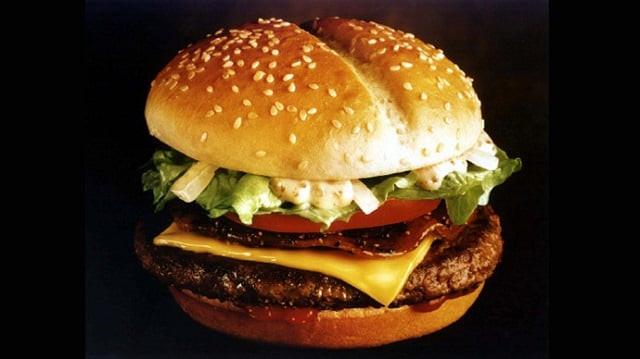Children living near fast food outlets more likely to gain weight: study
Weight of 1,500 state primary school students, aged four to 11, was monitored during study

PHOTO: REUTERS
Scholars from the University of the West of England conducted a research by monitoring the weight of more than 1,500 state primary school students aged four to 11. It was found that children who lived in proximity to fast food joints were more likely to gain a considerable amount of weight between the first and last year of primary school.
4 cooking mistakes that make you gain weight
The study claims it is the first to establish a link between accessibility to fast food outlets and weight gain over time and is set to be published in the Journal of Public Health.
Matthew Pearce, the lead researcher and a former UWE Bristol public health student, now working for the NHS, said that the study raises vital questions about the local food environment and its impact on the diet of young children.
“We know from national data that the number of children classified as obese doubles between the first and last year of primary school. Understanding the reasons for this is important to protect the future health of children. Obesity is driven by many complex factors. Our study adds to existing evidence that the neighbourhood environment plays an important role in the development of obesity,” he said.
A “fast food accessibility score” was calculated by researchers for each child, taking into account the number of fast food outlets within half a mile of their home. A higher density of fast food outlets was found in poorer neighbourhoods.
This matches findings recently published by Cambridge University’s Centre for Diet and Activity Research, according to which there are now 56,638 takeaways in England – more than a quarter of the entire country’s food outlets – with most of the outlets found in England’s poorest neighbourhoods.
7 ways to cut 500 calories a day for weight loss
When the figures were published, Caroline Cerny, of the Obesity Health Alliance, told the Guardian that the environment can influence levels of obesity. She said, “Despite the health impact of the obesity epidemic being well known, it is shocking that the number of fast food takeaways is increasing. Whether it’s the marketing of junk food on billboards and TV, or the proximity of junk food outlets to schools, we know our environment has a huge impact on levels of over-weightness and obesity.”
Pearce agrees and urges for efforts to be made to help people adopt healthier lifestyles.
“While ultimately it is down to individuals on how they choose to live, it is widely accepted that we live in environments that make managing our weight increasingly difficult.We therefore need national and local policymakers to take decisions that support more favourable conditions that enable people to eat healthier and become more physically active,” he said.
This story originally appeared on the Guardian.



















COMMENTS
Comments are moderated and generally will be posted if they are on-topic and not abusive.
For more information, please see our Comments FAQ